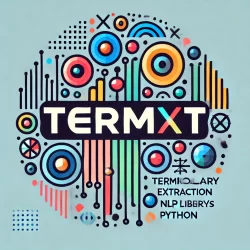I love this topic. Thanks for joining in this reading!
For years, regex-based rules have been the foundation of language quality assurance (LQA). They’ve helped catch inconsistencies, formatting issues, and even translation errors. I’ve been a huge fan of regex for many years—it’s a powerful tool.
But here’s the problem:
- 🔹 Regex operates at the lexical level—it identifies patterns in text but doesn’t understand meaning.
- 🔹 It’s rigid—if something deviates slightly from the pattern, regex might fail to catch it.
What if we go beyond regex and introduce QA rules that understand language at a deeper, semantic level?
This is exactly what NLU Rules are designed to do. And AI is the perfect partner to make it happen.
🔍 What Are NLU Rules?
Natural Language Understanding (NLU) Rules take the core idea of regex-based checks and elevate it to a more intuitive and intelligent level. Instead of writing technical rules with complex expressions, you describe what needs to be checked in plain language—and the system does the rest.
That’s it. No need to write regex patterns.
Why does this matter? Because Large Language Models (LLMs) and GPTs need structured rules to build multiple QA layers for precise intervention.
With NLU Rules, there’s less time coding regex and more time focusing on what truly matters: ensuring high-quality, accurate, and meaningful translations.
💡 Why Move Beyond Regex?
Let’s compare traditional regex-based QA with NLU Rules to illustrate the difference.
📝 Example 1: Product Name Consistency
✅ Regex Rule (Lexical-Based):
## Check product names
\b(BrandName|ProductX|ModelZ)\b
🔹 Limitations:
- Doesn’t recognize variations (e.g., “Product-X” vs. “Product X”).
- Only looks for patterns, without understanding context.
- If the product name is translated incorrectly (e.g., “ProductoX”), regex won’t necessarily catch it.
✅ NLU Rule (Semantic-Based):
📝 “Ensure that product names are not translated and remain in English.”
🔹 Why it’s better:
- Understands intent—not just words.
- Detects unexpected translations, even with formatting variations
📝 Example 2: Measurement Conversions
✅ Regex Rule (Lexical-Based):
## Check units of measurement
`(\d+)\s?(cm|kg|m|l)\b`
🔹 Limitations:
- Can detect numbers with units but doesn’t verify correctness.
✅ NLU Rule (Semantic-Based):
📝 “Verify that measurements are properly converted to the metric system.”
🔹 Why it’s better:
- AI understands the context—whether a conversion from miles to kilometers or pounds to kilograms was done correctly.
📝 Example 3: Marketing Message Consistency
✅ Regex Rule (Lexical-Based):
## Different options
`\b(New Year Sale|50% Off|Limited Time)\b`
🔹 Limitations:
- Ensures specific terms are used, but doesn’t check meaning.
- Cannot adapt to paraphrased versions of the message.
✅ NLU Rule (Semantic-Based):
📝 “Check if marketing terms are consistently translated according to the glossary.”
🔹 Why it’s better:
- Ensures meaning is preserved, even if the wording changes.
🛠️ How NLU Rules Work
NLU Rules make language QA smarter and more intuitive. Here’s how they work:
- 1️⃣ Describe the Issue – Instead of coding regex, simply explain in natural language what you need to check.
- 2️⃣ AI Converts It into Instructions – The system translates your request into structured validation steps.
- 3️⃣ Enable/Disable Rules – Easily manage which rules are active during analysis.
This approach removes the need for technical expertise in regex and allows linguists, QA specialists, and translators to define smarter, more adaptive quality checks.
🌍 Why This Matters for Localization & AI
The localization and language tech industry has relied on regex for too long. While powerful, regex has clear limitations:
- ⚡ Hard to scale – Maintaining large regex libraries is time-consuming and fragile.
- ⚡ Not context-aware – Regex can’t understand meaning, intent, or ambiguity.
- ⚡ Prone to false positives – Overly rigid patterns often cause false alarms in QA reports.
NLU Rules change the game by allowing AI-driven semantic checks—bringing quality control closer to human-level understanding.
🚀 The Evolution of LangQA AI: NLU Rules in Action
I’ve been integrating NLU Rules into LangQA AI Assistant, taking AI-powered language QA to the next level.
One of the biggest challenges I’m tackling is integrating GPT prompts so that the new QA layers are included in the call to the LLM while also converting the stream responses into structured objects.
This allows for dynamic rule-based checks that weren’t possible before.
This isn’t just an improvement. It’s an evolution.
So, I’ll keep working on it. 🚀
💬 Final Thoughts: Are You Ready for NLU Rules?
We’re entering a new era where language QA doesn’t have to rely on outdated regex patterns.
With NLU Rules, AI-driven QA operates at a deeper level—understanding context, meaning, and intent.
🔹 Are you aware of this shift? Time will tell. But one thing is certain:
The future of localization QA is already being shaped—and it’s happening now. 🚀
What do you think? Would NLU Rules improve your workflow? Let’s discuss! 💬👇









Leave a Reply
Want to share your comments?